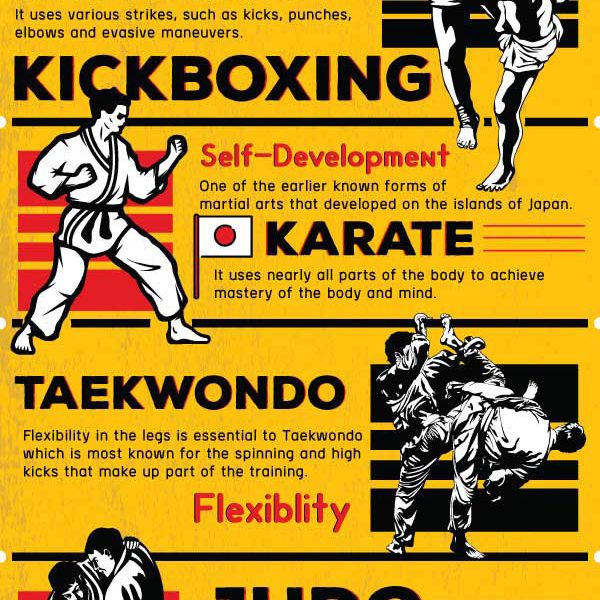Demystifying The Different Fighting Style Styles: From Karate To Taekwondo
Demystifying The Different Fighting Style Styles: From Karate To Taekwondo
Blog Article
https://kameronfpygq.blogtov.com/13737749/encouraging-martial-artists-unleashing-self-confidence-through-training -Osman Clay
Are you tired of feeling overwhelmed by the huge world of fighting styles? With a lot of designs to choose from, it can be simple to get shed in a sea of strikes, kicks, and mystical names. Yet anxiety not!
This conversation will certainly debunk the various fighting styles designs, taking you on a journey from the powerful strikes of Karate to the vibrant kicks of Taekwondo. Prepare to uncover the beginnings, methods, and philosophies behind these old art types.
So, tighten your belt and prepare to embark on an enlightening expedition right into the captivating world of martial arts.
Origins of Martial Arts Styles
The beginnings of fighting styles designs can be mapped back to old worlds and their demand for self-defense and combat methods. Throughout history, various cultures created their very own special approaches of battling, each with its very own set of strategies and viewpoints.
In China, for instance, fighting styles designs such as Kung Fu and Tai Chi were created as a way of protection and improving physical and psychological health.
In Recommended Reading , the samurai warriors developed designs like Karate and Judo, concentrating on technique, accuracy, and proficiency of the body.
Likewise, in Korea, Taekwondo emerged as a martial art highlighting high kicks, rapid motions, and psychological perseverance.
These very early civilizations laid the foundation for the varied variety of fighting styles designs that exist today, each with its own rich background and cultural relevance.
Strategies and Training Techniques
To understand fighting styles styles, experts must learn numerous methods and training methods.
Methods are the certain activities and activities utilized in combat, such as strikes, kicks, tosses, and blocks. Various martial arts designs have their very own one-of-a-kind collection of techniques that practitioners should grasp with rigorous training.
Training techniques vary depending upon the style, but they typically involve a mix of physical conditioning, drills, competing, and kinds.
https://best-combat-martial-arts78777.blogacep.com/38483265/the-basics-and-value-of-taekwondo-types is important to develop toughness, versatility, and endurance. Drills aid professionals fine-tune their strategies and boost their speed and accuracy.
Sparring allows experts to exercise their strategies in a regulated, sensible environment. Kinds, additionally known as kata, are deliberate sequences of movements that aid experts create muscle mass memory and emphasis.
Viewpoints and Principles
Checking out the ideologies and concepts of fighting styles designs can give you with a much deeper understanding of your picked technique. Each martial art has its very own special approach and collection of directing principles that form the means it's exercised.
For example, Karate stresses technique, regard, and self-discipline. It instructs practitioners to concentrate their body and minds, enabling them to safeguard themselves while preserving a sense of inner tranquility.
On the other hand, Taekwondo places a solid focus on speed, agility, and versatility. Its concepts are rooted in the tenets of politeness, stability, determination, self-discipline, and indomitable spirit.
Conclusion
Since you have actually checked out the origins, methods, and viewpoints of various martial arts styles, you have a deeper understanding of these ancient self-controls.
Picture a young karate pupil, practicing with undeviating determination and focus, breaking through boards with a powerful strike.
Their journey showcases the commitment and strength called for to master a martial art, advising us that with discipline and determination, anything is possible.
